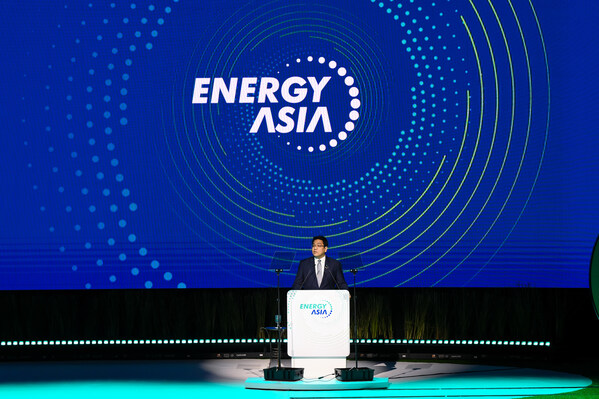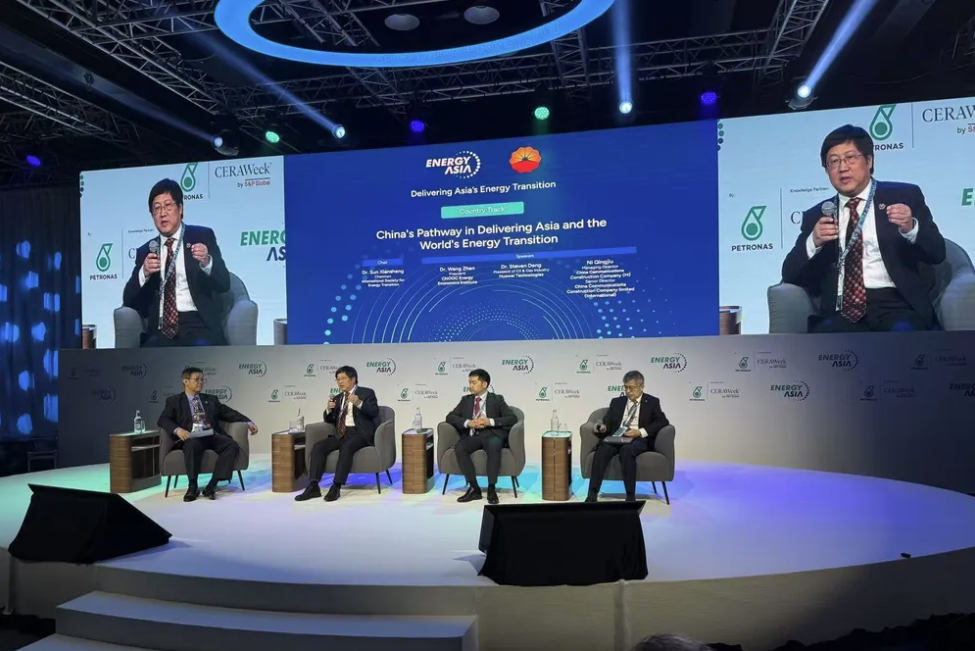The “Energy Asia” forum, hosted by PETRONAS (Malaysia’s national oil company) with S&P Global’s CERAWeek as knowledge partner, grandly opened on June 16 at the Kuala Lumpur Convention Center. Under the theme “Shaping Asia’s New Energy Transition Landscape,” this year’s forum brought together policymakers, industry leaders and energy professionals from over 60 countries spanning 38 sectors, jointly issuing a resounding call for bold and coordinated action to accelerate Asia’s transition toward a net-zero future.

In his opening address, Tan Sri Taufik, President and Group CEO of PETRONAS and Chairman of Energy Asia, articulated the forum’s founding vision of collaborative solution implementation. He emphasized: “At Energy Asia, we firmly believe energy security and climate action are not opposing but complementary priorities. With Asia’s energy demand projected to double by 2050, only by mobilizing the entire energy ecosystem in concerted, synchronized action can we achieve an equitable energy transition that leaves no one behind.”
He further noted: “This year, Energy Asia convenes leaders and experts across oil & gas, power & utilities, finance & logistics, technology, and government sectors to collectively drive systemic transformation of the energy ecosystem.”
Energy Asia 2025 has gathered over 180 world-renowned heavyweight guests, with attendees including international energy leaders such as H.E. Haitham Al Ghais, Secretary General of OPEC; Patrick Pouyanné, Chairman and CEO of TotalEnergies; and Meg O’Neill, CEO and Managing Director of Woodside Energy.
The forum conducted over 50 strategic dialogues centered around seven core themes, delving into Asian countries’ collaborations and explorations in enhancing energy security, accelerating renewable energy deployment, promoting decarbonization solutions, facilitating technology transfer, and advancing economic and social development.

The Chinese government is advancing its energy transition, aided by market mechanisms and definitive policies and goals, with the private sector playing a pivotal role, senior Chinese executives said this week.
China is forging dual dominance in traditional and renewable energy systems, Wang Zhen, deputy chief economist at China National Offshore Oil Corporation.
“China’s energy transition is no longer at a crossroads”, he said.
Wang – speaking alongside Lu Ruquan, president of the CNPC Economics and Technology Research Institute, at the Energy Asia 2025 event in Kuala Lumpur, Malaysia – said that China has formulated the framework for a “new type of energy system” as critical government guidance.
“The government is establishing defined expectations,” Wang stated, crediting market-oriented mechanisms honed over 40 years of reform, an open philosophy fostering cooperation, and continuous innovation as the key drivers enabling progress.
The executives painted a picture of a nation leveraging its massive industrial base and policy clarity to lead the global renewable energy buildout, fuelled by dynamic private sector competition and innovation.
Simultaneously, state energy giants like CNOOC are implementing multifaceted strategies to decarbonise their core hydrocarbon operations.
China’s recently enacted landmark Energy Law for the first time enshrines the nation’s energy policies within a legal framework, coming as the country seeks to enhance its energy security while steering towards a lower-carbon economy.
The law has a strong focus on renewables — underscoring the country’s aims to boost the share of non-fossil energy in its energy mix.
It highlights China’s commitment to reducing its carbon footprint, prioritising renewable energy development as the country aims for peak carbon emissions by 2030 and to achieve carbon neutrality by 2060.
The law also mandates significant expansion in the exploration and development of domestic oil and natural gas resources, which are seen as critical to ensure China’s energy independence.
Key drivers of China’s renewable energy progress
Lu presented data to demonstrate the scale of the nation’s progress on renewable energy: China’s installed solar power capacity had reached approximately 1 terawatt by late April, representing roughly 40% of the global total. Concurrently, the nation’s cumulative wind power capacity exceeded 500 gigawatts, accounting for about 45% of the world’s total installations. Green electricity last year constituted around 20% of China’s total primary energy consumption.
Lu attributed this rapid renewable energy deployment to four interconnected factors, highlighting the crucial role of private enterprise.
Lu identified private sector competition as the first key factor.
“All the Chinese new energy companies… are private companies… competing with each other,” he said.
He cited consistent, supportive government policy — with reforms, planning documents and sector-specific policies issued almost annually over the past decade — as the second pillar.
Technological innovation and the active fostering of entrepreneurship – encouraging companies to innovate and compete – rounded out Lu’s four factors accelerating China’s renewable energy.
Lu characterised China’s progress as a significant contribution to Asia’s broader energy transition.
Wang emphasised that for major energy firms, the transition is a complex, multidimensional process that is integrated into their core strategy.
“The first thing is still the enhanced oil and gas, especially the domestic… and we must let the production system be green and low carbon,” Wang stated, underscoring the need to maintain energy security while decarbonising.
He detailed CNOOC’s initiatives reflecting this approach: A 10 billion yuan ($1.4 billion) investment to electrify offshore drilling platforms in the Bohai Sea, significantly reducing operational emissions; integrating renewable energy sources with platforms; actively developing carbon capture, utilisation and storage (CCUS) technologies; and upgrading its product portfolio towards higher-value, cleaner output.
Our company is continuously committed to developing more efficient, compact, and cost-effective separation equipment while also focusing on environmentally friendly innovations. For example, our high-efficiency cyclone desander utilize advanced ceramic wear-resistant (or called, highly anti-erosion) materials, achieving a sand/solids removal efficiency of up to 0.5 microns at 98% for gas treatment.This allows produced gas to be injected into the reservoirs for low permeability oilfield that utilizes miscible gas flooding and solves the problem of low permeability reservoirs development and significantly enhances oil recovery. Or, it can treat the produced water by removing particles of 2 microns above at 98% for directly re-injected into reservoirs, reducing marine environmental impact while enhancing oil-field productivity with water-flooding technology.
We firmly believe that only by delivering superior equipment can we create greater opportunities for business growth and professional advancement. This dedication to continuous innovation and quality enhancement drives our daily operations, empowering us to consistently deliver better solutions for our clients.
Moving forward, we remain committed to our development philosophy of “customer demand-oriented, technology innovation-driven” growth, creating sustained value for clients through three key dimensions:
1. Discover potential problems in production for users and solve them;
2. Provide users with more suitable, more reasonable and more advanced production plans and equipment;
3. Reduce operation and maintenance requirements, reduce foot-print area, equipment weight(dry/operation), and investment costs for users.
Post time: Jun-30-2025
